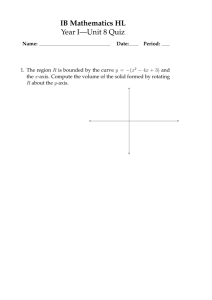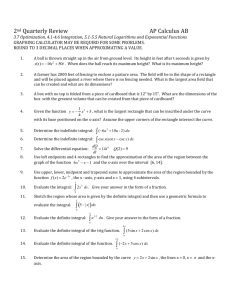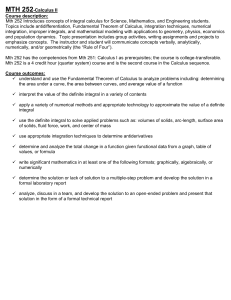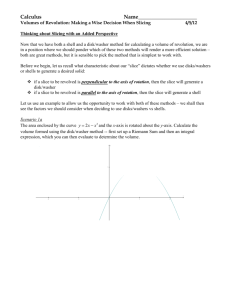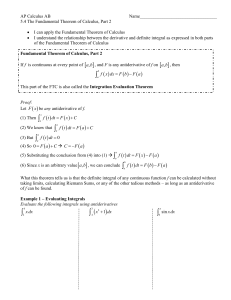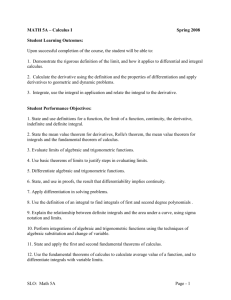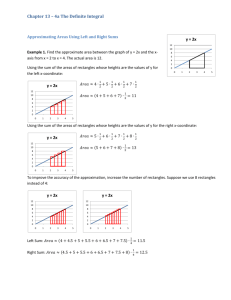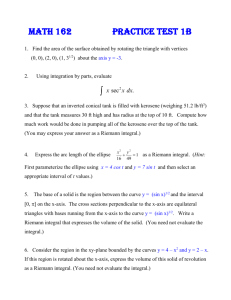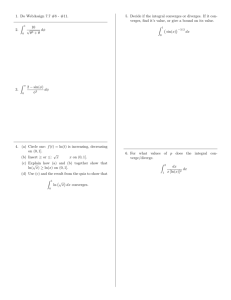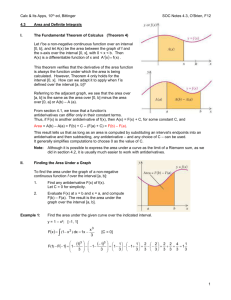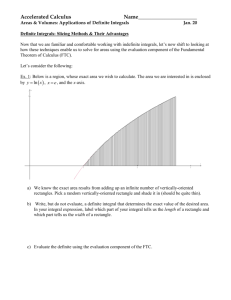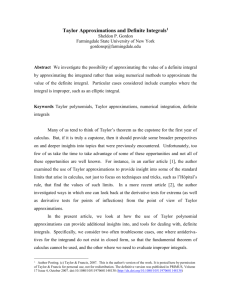INTRODUCTION OF THE DEFINITE INTEGRAL The geometric
advertisement
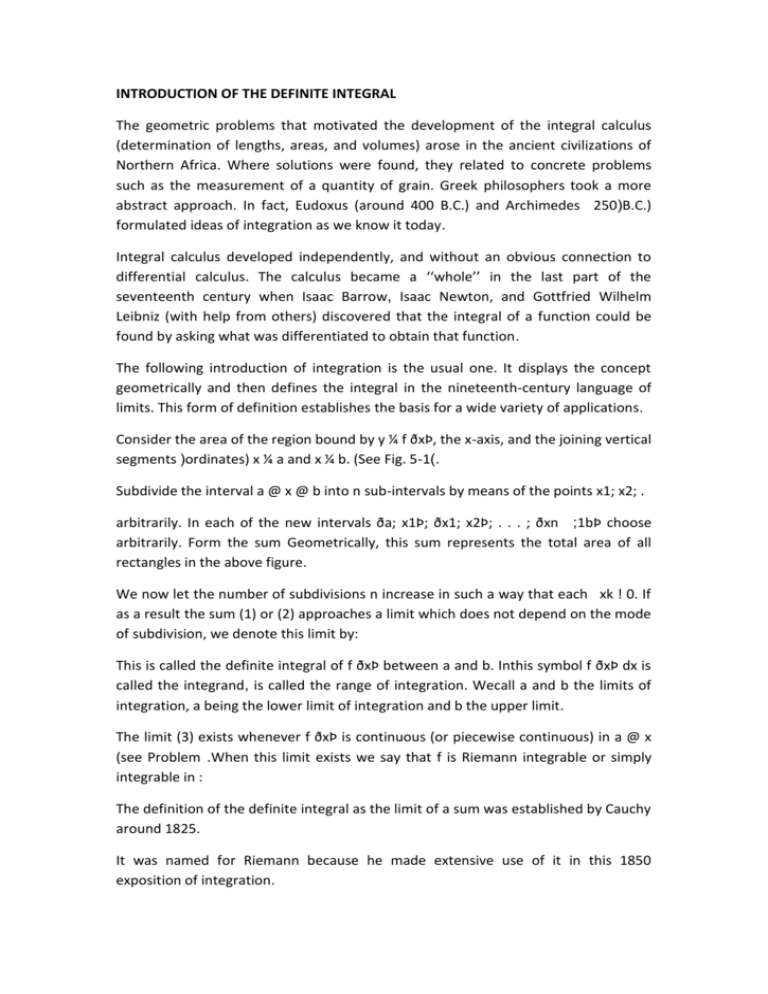
INTRODUCTION OF THE DEFINITE INTEGRAL The geometric problems that motivated the development of the integral calculus (determination of lengths, areas, and volumes) arose in the ancient civilizations of Northern Africa. Where solutions were found, they related to concrete problems such as the measurement of a quantity of grain. Greek philosophers took a more abstract approach. In fact, Eudoxus (around 400 B.C.) and Archimedes 052(B.C.) formulated ideas of integration as we know it today. Integral calculus developed independently, and without an obvious connection to differential calculus. The calculus became a ‘‘whole’’ in the last part of the seventeenth century when Isaac Barrow, Isaac Newton, and Gottfried Wilhelm Leibniz (with help from others) discovered that the integral of a function could be found by asking what was differentiated to obtain that function. The following introduction of integration is the usual one. It displays the concept geometrically and then defines the integral in the nineteenth-century language of limits. This form of definition establishes the basis for a wide variety of applications. Consider the area of the region bound by y ¼ f ðxÞ, the x-axis, and the joining vertical segments (ordinates) x ¼ a and x ¼ b. (See Fig. 5-1). Subdivide the interval a @ x @ b into n sub-intervals by means of the points x1; x2; . arbitrarily. In each of the new intervals ða; x1Þ; ðx1; x2Þ; . . . ; ðxn ;1bÞ choose arbitrarily. Form the sum Geometrically, this sum represents the total area of all rectangles in the above figure. We now let the number of subdivisions n increase in such a way that each xk ! 0. If as a result the sum (1) or (2) approaches a limit which does not depend on the mode of subdivision, we denote this limit by: This is called the definite integral of f ðxÞ between a and b. Inthis symbol f ðxÞ dx is called the integrand, is called the range of integration. Wecall a and b the limits of integration, a being the lower limit of integration and b the upper limit. The limit (3) exists whenever f ðxÞ is continuous (or piecewise continuous) in a @ x (see Problem .When this limit exists we say that f is Riemann integrable or simply integrable in : The definition of the definite integral as the limit of a sum was established by Cauchy around 1825. It was named for Riemann because he made extensive use of it in this 1850 exposition of integration. Geometrically the value of this definite integral represents the area bounded by the curve y the x-axis and the ordinates at x ¼ a and x ¼ b only if f ðxÞ A 0. If f ðxÞ is sometimes positive and sometimes negative, the definite integral represents the algebraic sum of the areas above and below the xaxis, treating areas above the x-axis as positive and areas below the x-axis as negative. MEASURE ZERO A set of points on the x-axis is said to have measure zero if the sum of the lengths of intervals enclosing all the points can be made arbitrary small (less than any given positive number ). We can show (see Problem 5.6) that any countable set of points on the real axis has measure zero. In particular, the set of rational numbers which is countable (see Problems 1.17 and 1.59, Chapter 1), has measure zero. An important theorem in the theory of Riemann integration is the following: Theorem. If f ðxÞ is bounded in ½a; b ,then a necessary and sufficient condition for he existence of a f ðxÞ dx is that the set of discontinuities of f ðxÞ have measure zero. VALUE THEOREMS FOR INTEGRALS As in differential calculus the mean value theorems listed below are existence theorems. The first one generalizes the idea of finding an arithmetic mean (i.e., an average value of a given set of values) to a continuous function over an interval. The second mean value theorem is an extension of the first one that defines a weighted average of a continuous function. By analogy, consider determining the arithmetic mean (i.e., average value) of temperatures at noon for a given week. This question is resolved by recording the 7 temperatures, adding them, and dividing by 7. To generalize from the notion of arithmetic mean and ask for the average temperature for the week is much more complicated because the spectrum of temperatures is now continuous. However, it is reasonable to believe that there exists a time at which the average temperature takes place. The manner in which the integral can be employed to resolve .

